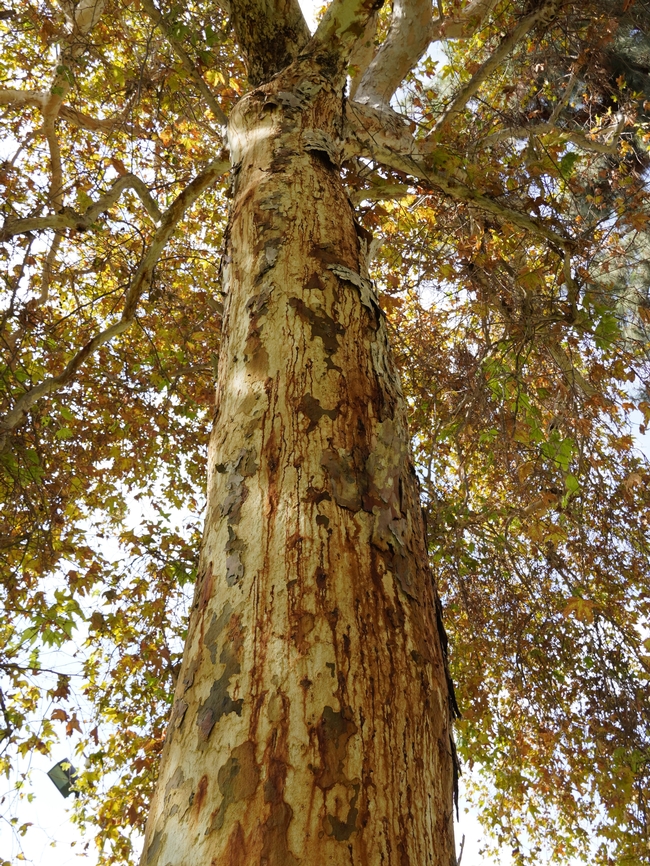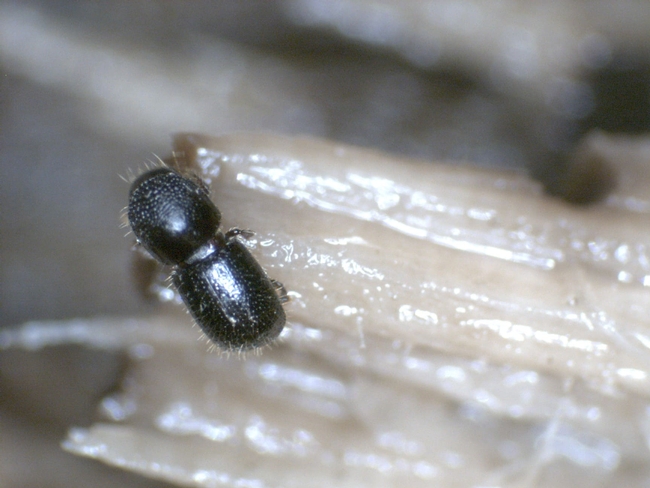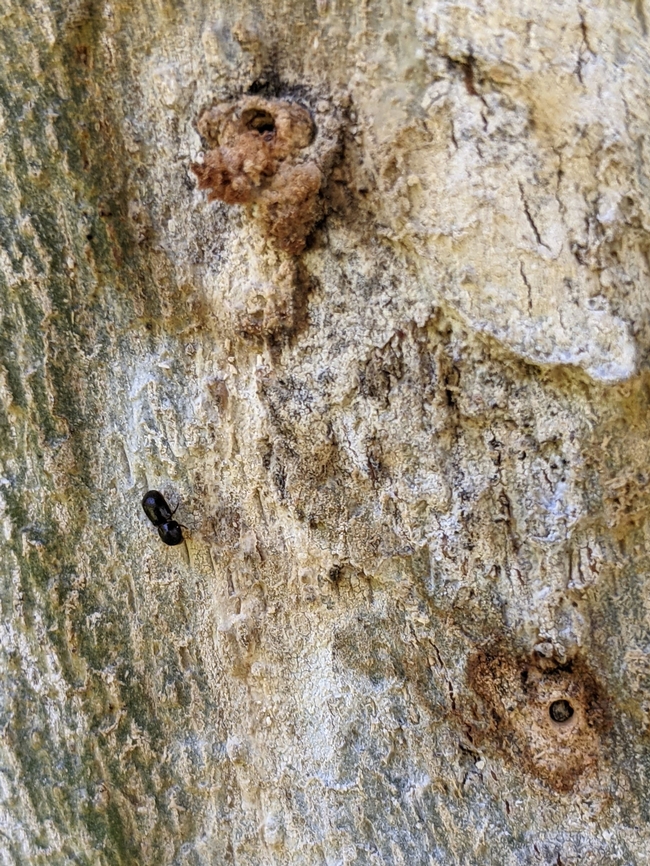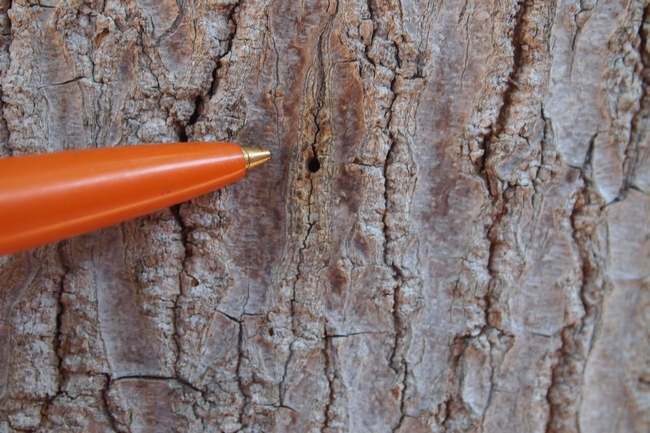Posts Tagged: UC IPM
'A Lady in Red': Petal Pusher?
It wouldn't make the news, even if it were a "Slow News Day." "Lady in Red Climbs Neon-Pink Petals in Search of Aphids." Lady beetles,...
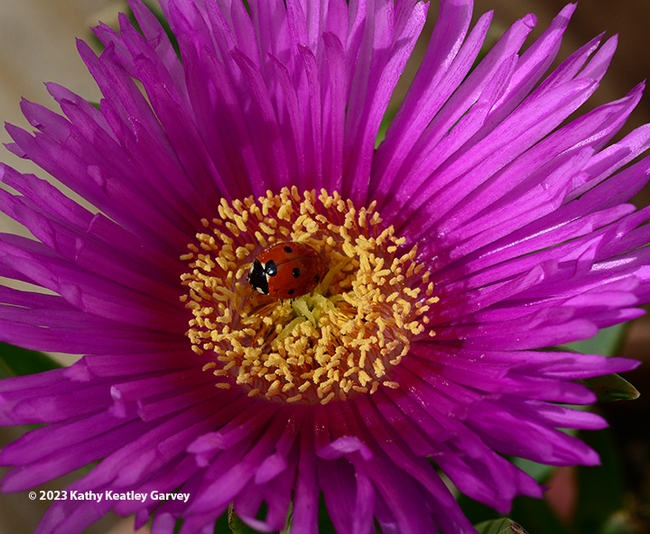
A lady beetle nestled in an ice plant blossom. (Photo by Kathy Keatley Garvey)
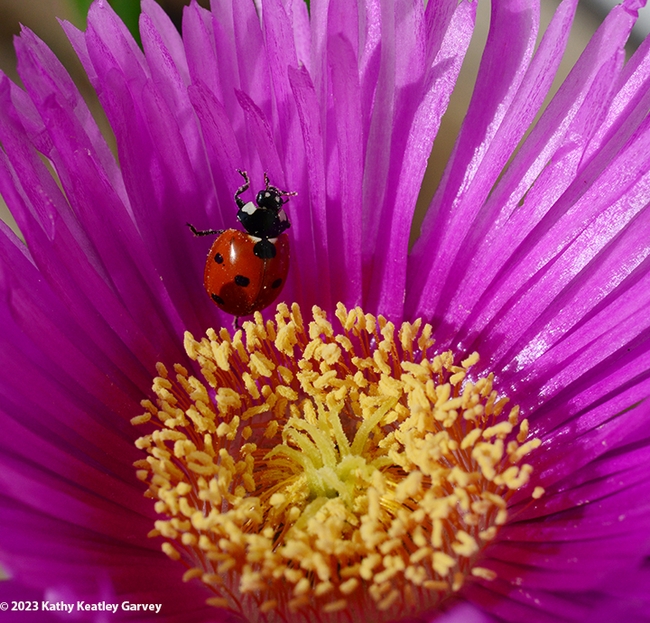
Let's climb! A lady beetle begins her ascent--up an ice plant blossom. (Photo by Kathy Keatley Garvey)
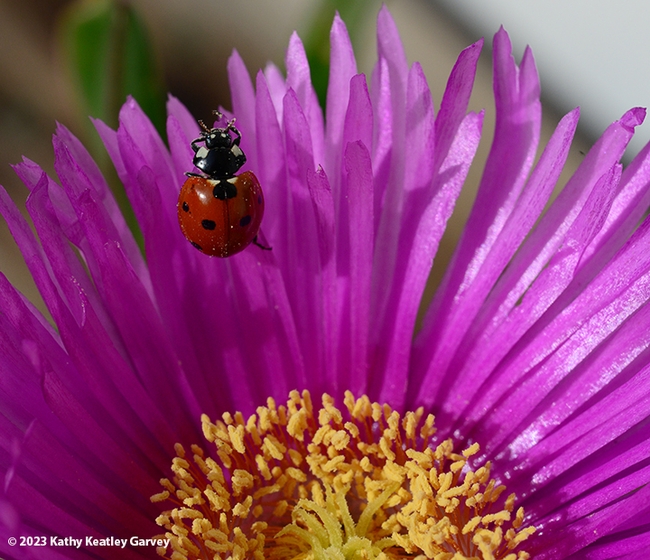
How am I doing? Am I doing this right? Lady beetle stops. (Photo by Kathy Keatley Garvey)
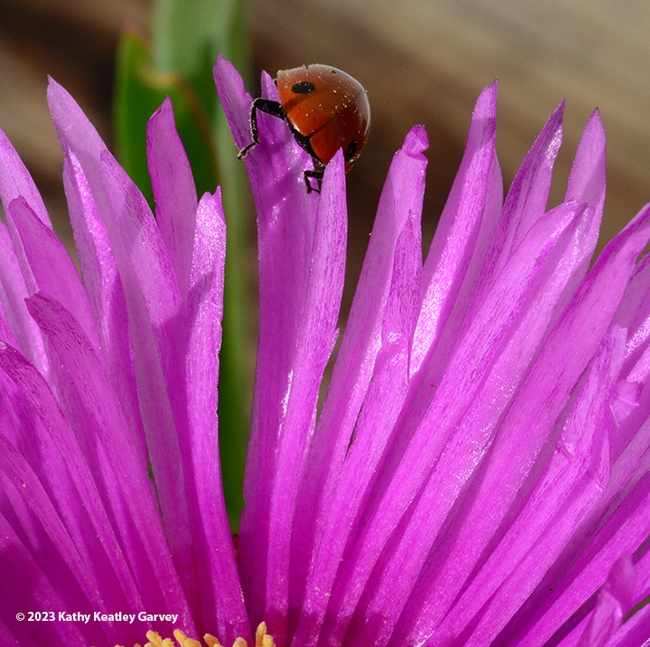
I did it! I climbed my Mount Everest and I'm about to descend. (Photo by Kathy Keatley Garvey)
The Wonderful World of Wasps
"Wasps are terrible. They come jam-packed full of pain and anger, and they love to sting us out of the blue while we're minding our own business....
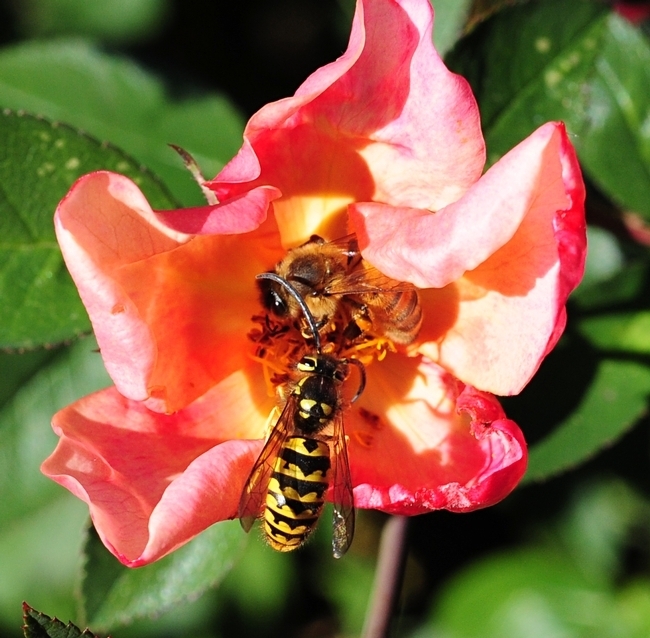
A Western yellowjacket, Vespula pensylvanica, and a honey bee, Apis mellifera) sharing a rose in Davis, Calif. (Photo by Kathy Keatley Garvey)
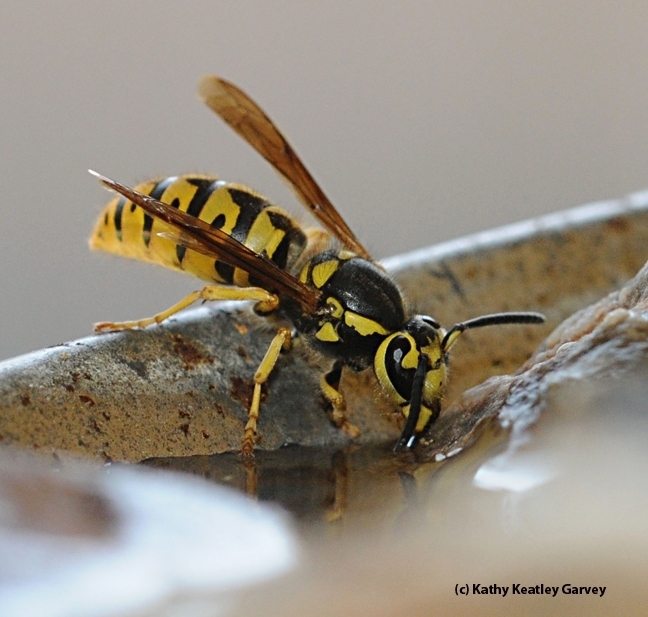
A thirsty Western yellowjacket, Vespula pensylvanica, sipping water from a fountain in Davis, Calif. (Photo by Kathy Keatley Garvey)
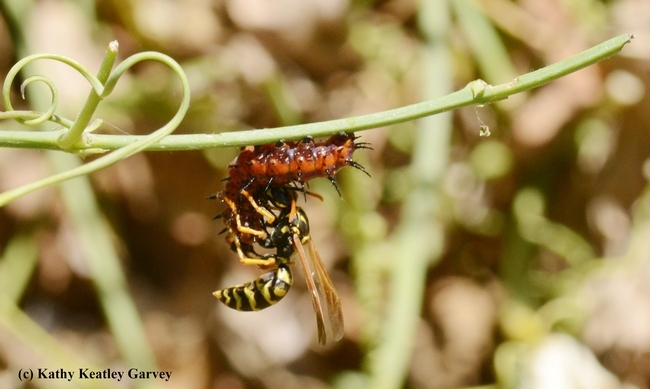
A European paper wasp, Polistes dominulo, preying on a caterpillar of the Gulf Fritillary, Agraulis vanillae, in Vacaville, Calif. (Photo by Kathy Keatley Garvey)
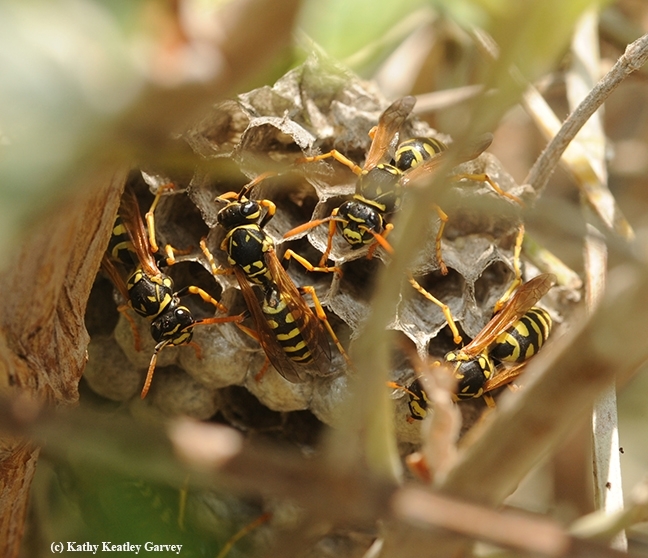
The nest of an European paper wasp, Polistes dominulo, tucked inside a shrub in a garden in Davis, Calif. (Photo by Kathy Keatley Garvey)
Damselflies: Long, Slender and Delicate
If you like your insects long, slender and delicate, and resembling a flying neon needle, the damselfly is for you. Who can resist watching...
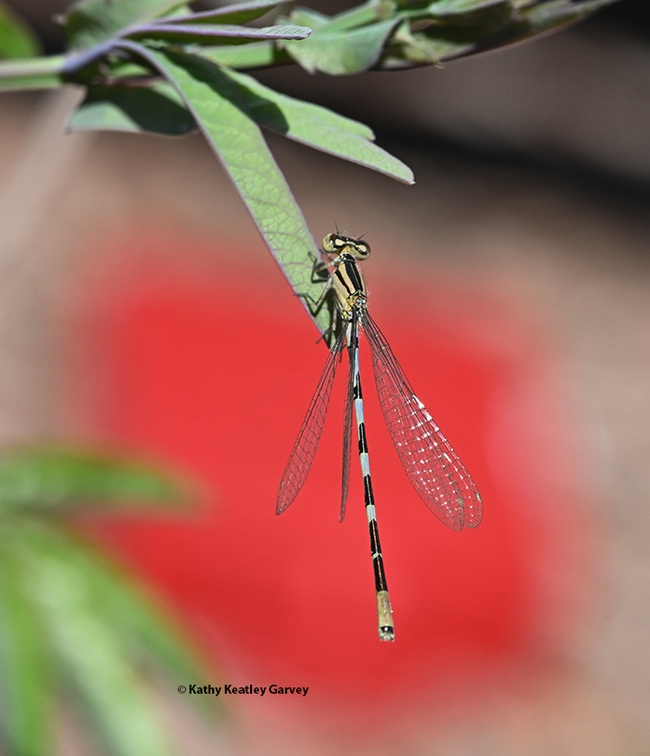
This damselfly appears framed "in the red" (a red vehicle light). (Photo by Kathy Keatley Garvey)
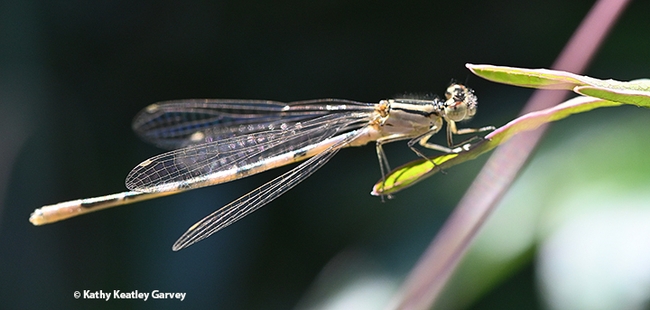
The damselfly is long and slender and is sometimes called "the devil's darning needle." (Photo by Kathy Keatley Garvey)
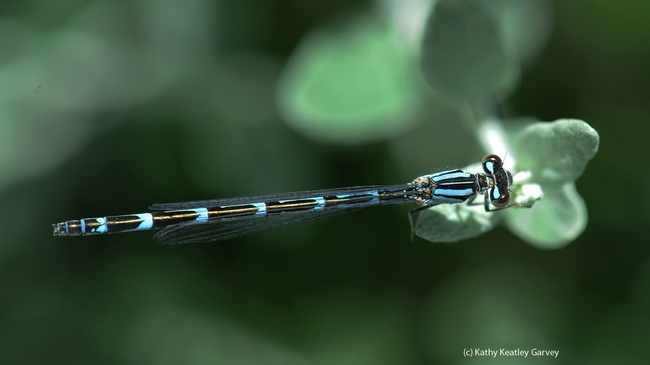
The common blue damselfly or Northern Bluet (Enallagma cyathigerum). (Photo by Kathy Keatley Garvey)
No 'Assassination' Today!
No assassinations today! But an "assassination attempt." There it was, a leafhopper assassin bug, Zelus renardii, waiting for prey...
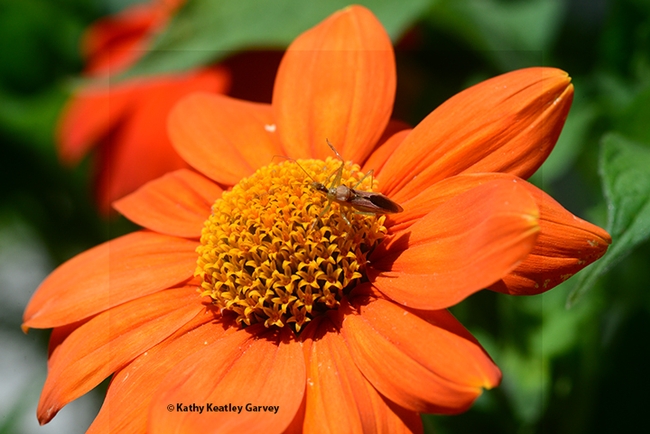
An assassin bug, Zelus renardii,waits to ambush prey on a Mexican sunflower, Tithonia rotundifola. (Photo by Kathy Keatley Garvey)
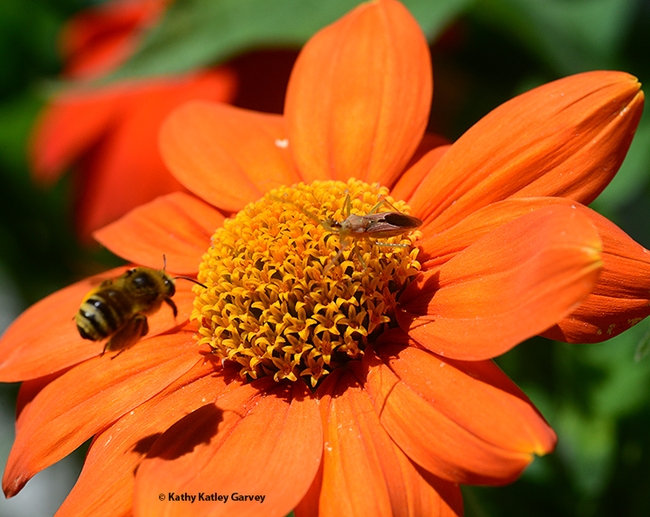
A longhorned bee arrives for some nectar while the assassin bug watches in apparent anticipation. (Photo by Kathy Keatley Garvey)
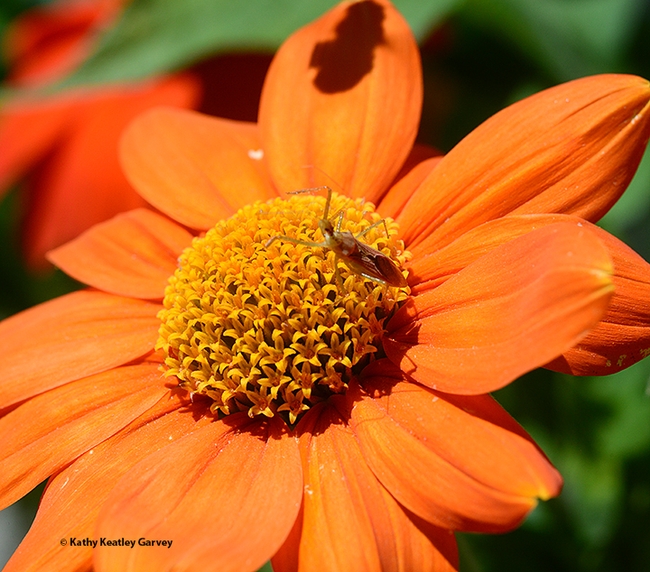
The longhorned bee leaves only its shadow behind. (Photo by Kathy Keatley Garvey)
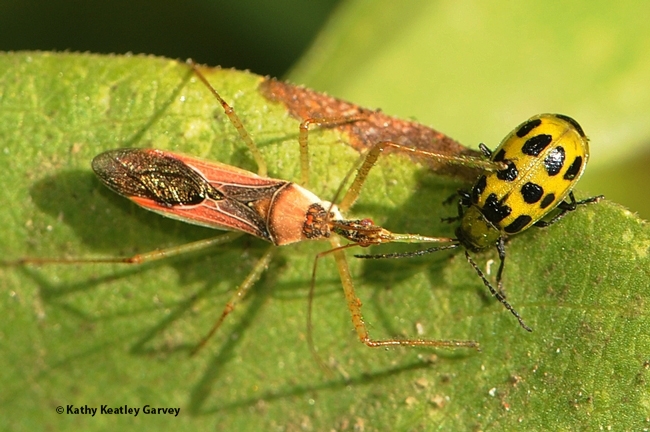
This assassin bug had more luck--or better ambushing skills. It nails a pest, a spotted cucumber beetle. (Photo by Kathy Keatley Garvey)
After shothole borer invasion, UC Irvine becomes ‘perfect testing ground’
Results help inform best practices for managing the disease-causing beetle
The University of California, Irvine campus is home to a vast urban forest consisting of approximately 30,000 trees located in a mix of landscape, riparian and open space settings. In the mid-2010s, that forest came under threat from an invasive species of beetle that arborists and pest researchers were just learning about – the polyphagous shothole borer.
The tiny beetles, which may have arrived in California from their native Southeast Asia via infested shipping materials, tunnel into trees and introduce a fungus that serves as food for adult beetles and their larva.
As the fungus grows, it colonizes the tree's vascular system, blocking transport of water and nutrients. This causes a disease called Fusarium dieback that can kill branches or entire trees.
Shothole borers attack more than 100 species of trees and can live and reproduce in more than 65 tree species found in California. However, they seem to prefer box elders, sycamores and willows.
One reason the beetles were such a threat at UCI was the high number of sycamores on campus, especially in Aldrich Park at the campus center. Hundreds of cottonwoods, native willows, golden rain and coral trees also were affected. In total, the beetles attacked more than 2,000 trees, including 75 different tree species.
A variety of approaches to controlling beetle
To better understand and tackle this problem, UCI's Facilities Management department and Office of Environmental Planning and Sustainability collaborated with researchers affiliated with UC Agriculture and Natural Resources and UC Cooperative Extension. In addition, pesticide-manufacturing companies, pest control advisers and arborists provided materials and labor to help offset the cost of research.
“UCI was the perfect testing ground to determine integrated pest management strategies for this beetle/disease complex,” said John Kabashima, UCCE environmental horticulture advisor emeritus. “Our research was multifaceted, delving into early detection, monitoring and sampling, and cultural and chemical management.”
Kabashima said UCI provided the researchers with “a lot of freedom” to try a variety of approaches and study the results over time.
“We could cut down and sample trees or leave selected infested trees alone; we explored a variety of pesticide/fungicide combinations and application techniques,” he said. “That freedom resulted in many of the management solutions that are used today to effectively control this pest.”
UCI and the researchers also established a full inventory of affected trees on campus, evaluating severity of infestation by the number of entry/exit holes and signs of dieback. One important key to management is getting rid of “amplifiers” – heavily infested trees that are both hazardous and a source of beetles to spread to other trees.
“Typically, shothole borer infestations begin with just a few trees that for some reason are highly attractive to the beetles – perhaps based on tree species, tree spacing, irrigation conditions or other factors,” Kabashima said. “Over time, the beetles and fungus multiply largely undetected in those few trees. When the beetle population reaches a critical point and the trees begin to die, the female beetles fly to adjacent trees in a secondary invasion, eventually infesting many trees over a large area.”
An opportunity to diversify UCI's urban forest
At UCI, that initial invasion took place in landscaped areas containing many large, majestic sycamores that were planted when the campus began operations in the mid-1960s.
Over several years, UCI removed 700 heavily infested trees, including many of those historic sycamores, and replaced them with other tree species.
“We tip-toed into tree diversity, looking for other tree species that might be less susceptible to attack; we looked at 300 tree species that could be suitable for creating a more diverse tree forest as opposed to a street tree approach.” said Matthew Deines, senior planner with UCI Campus Physical & Environmental Planning. “We also planned for some redundancy in how we planted: If we had space, we would plant two trees of a single species and then plant backups with other species – what we did not want was a monoculture.”
Today, the forest at UCI is very different than it was in 2015. While shothole borers have not been eliminated completely, their presence is reduced significantly, and UCI now has the tools to manage them effectively. Reforestation efforts resulted in a diverse treescape that is not only more sustainable but also beautiful.
“Managing a 1,500-acre campus with 30,000 trees is a never-ending process,” said Richard Demerjian, UCI's assistant vice chancellor, Campus Physical & Environmental Planning. “Our forest continues to evolve, with an ongoing focus on increasing diversity and plant health.”
Demerjian also noted that UCI is now starting to consider planting new sycamore trees on a limited basis.
A primer on effective shothole borer management
Whether managing a forest of thousands of trees or just a few trees, landscape managers and residents can apply many of the lessons learned at UCI to control invasive shothole borers and other tree pests.
- Avoid monocultures. Tree diversity provides beauty and resiliency.
- Keep trees healthy. Proper irrigation and maintenance will keep trees strong and help protect them from shothole borers and other pests.
- Check trees. Look for the common signs and symptoms of infestation such as beetle entry/exit holes. Regular monitoring ensures that infestations are managed early, before they cause dieback or tree death.
- Confirm suspected infestations. Use the detection tool at www.ishb.org.
- Review management options. For trees with low infestation, prune the infested branches and monitor the tree's health over time. In non-riparian, urban settings, consider treating low and moderately infested trees with pesticides/fungicides demonstrated to be effective against the pest-disease complex (A licensed professional will be needed to apply the treatments). Severely infested trees may require removal.
- Call in a professional. A certified arborist or pest control professional would be able to provide recommendations based on the tree's condition. The local county Agricultural Commissioner's Office and UC Cooperative Extension office may have additional knowledge about current shothole borer monitoring and management programs in your area.
- Take care of green waste. The beetles can survive in cut wood for weeks or even months. Proper disposal of green waste includes chipping infested wood, followed by solarizing or composting the chips.
- Replant wisely. Begin planting new trees only after removing all amplifiers and establishing an ongoing monitoring program. Consider the current concentration of tree species when deciding what type of trees to plant.


